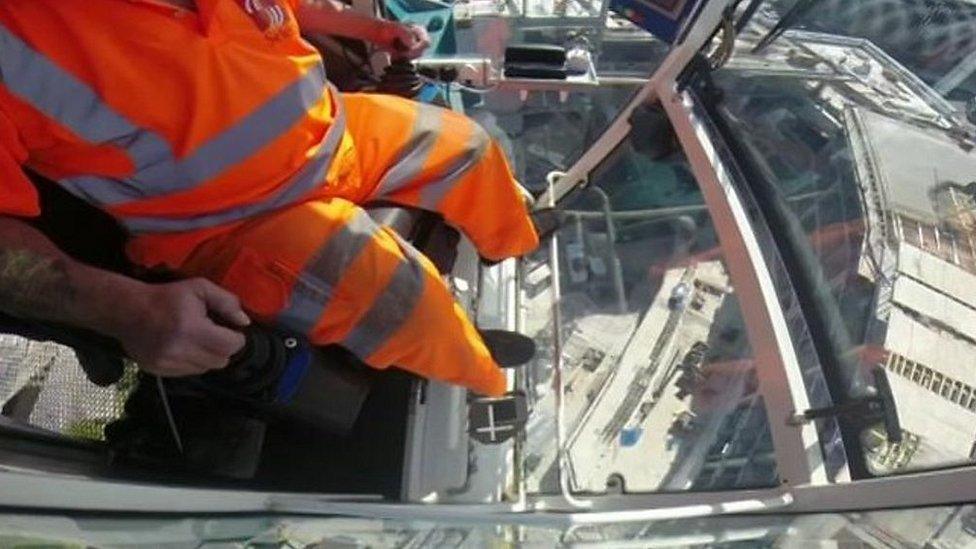Leeds Quarry Hill: Home sweet home again for famous site?
- Published
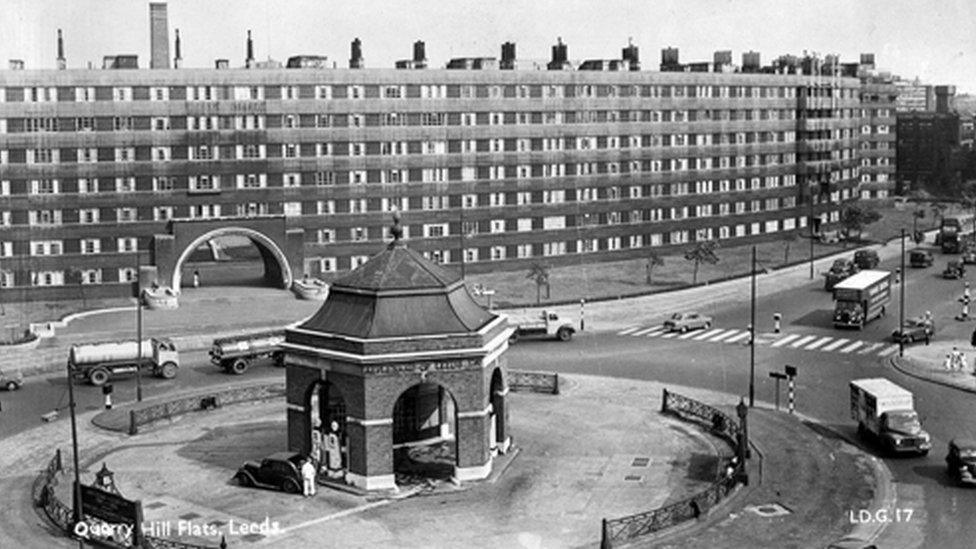
View from Eastgate towards Quarry Hill's dominating frontage in the 1950s
With plans to regenerate Leeds's Quarry Hill taking shape, the area will soon become a hive of activity and a focus for people's lives once again. As new tower blocks start to rise in its place, thoughts turn to the original Quarry Hill development - another bold housing scheme built in exactly the same city centre location - which was demolished after just 40 years.
"A way of life, a community". This is how one resident of Quarry Hill remembers the 13-block complex of 1,000 flats.
Completed just before World War Two, it was a huge, modernist scheme that dominated the Leeds skyscape on the very edge of the city centre. It survived bombing raids and, in its heyday, was home to about 3,000 people. Many remember it as a place of neighbourly comradeship served by "the best fish and chip shop in town".
But by the time it was knocked down 40 years later, its reputation, like the aging building, had crumbled. No physical traces of the site remain, but vivid memories and a fond legacy linger.
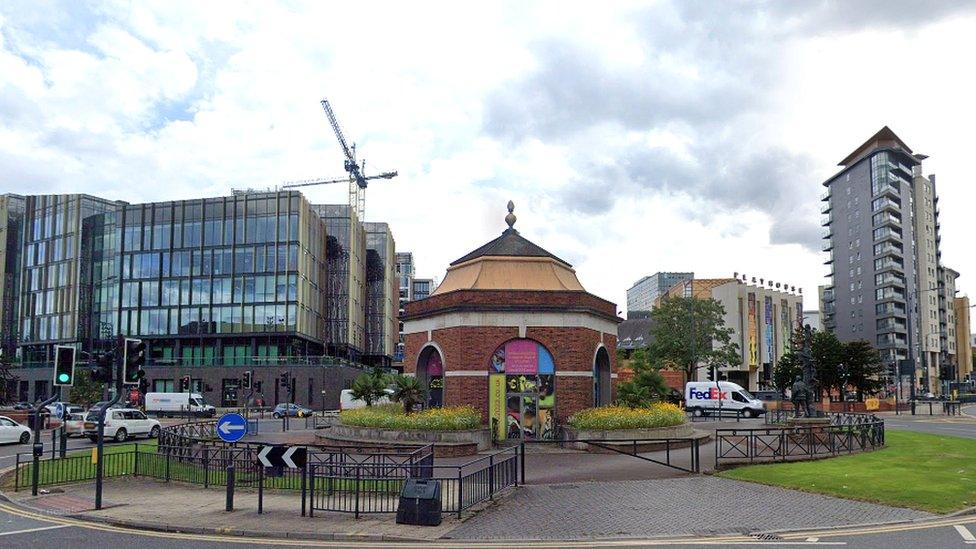
The Quarry Hill site as it is in 2021 includes Leeds City College and the Leeds Playhouse
The original Quarry Hill flats complex was born after a delegation from Leeds visited Vienna in 1932 to witness its innovative housing ideas, and the subsequent design was strongly influenced by continental Europe's modernist developments.
John Boughton, from the Municipal Dreams blog - which focuses on the work of those who have transformed city landscapes - has written that Quarry Hill "was the one inter-war scheme which came close to matching the scale and ambition of the workers' housing in Vienna".
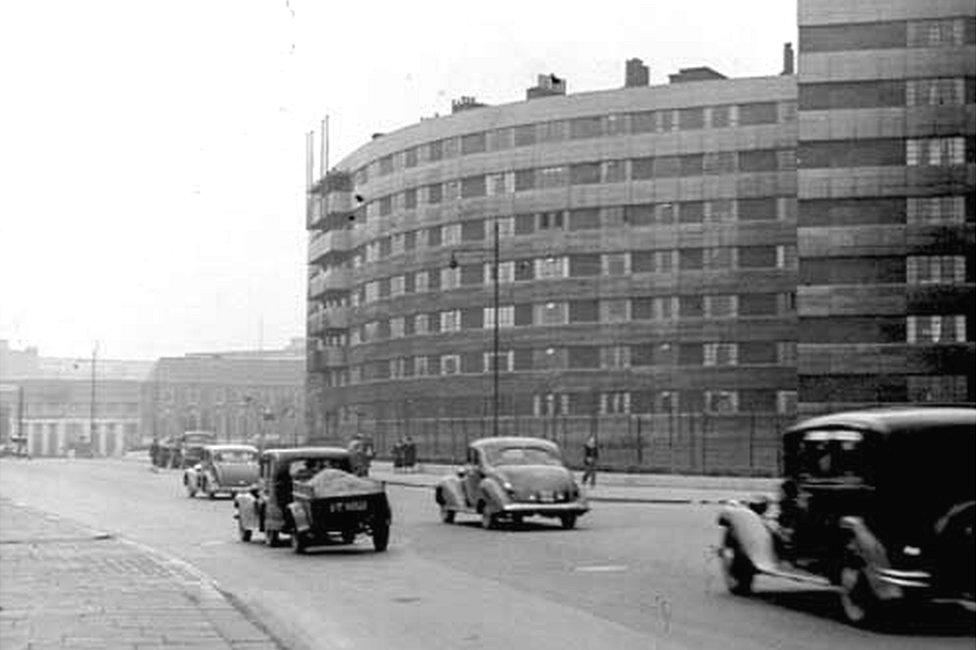
Initially, Quarry Hill was "a popular place to live", says Martin Hamilton from Leeds Civic Trust
As John Boughton has highlighted, in 1914, way before the Quarry Hill flats were built, there had been 78,000 back-to-back houses in Leeds.
The Quarry Hill area contained some of the worst housing in Leeds, less than one mile from the city centre, the blog added.
"And while back-to-back housing had been outlawed by national legislation in 1909, a technicality... allowed new back-to-backs to be built in Leeds into the 1930s.
"Multi-storey flats seemed an inescapable solution."
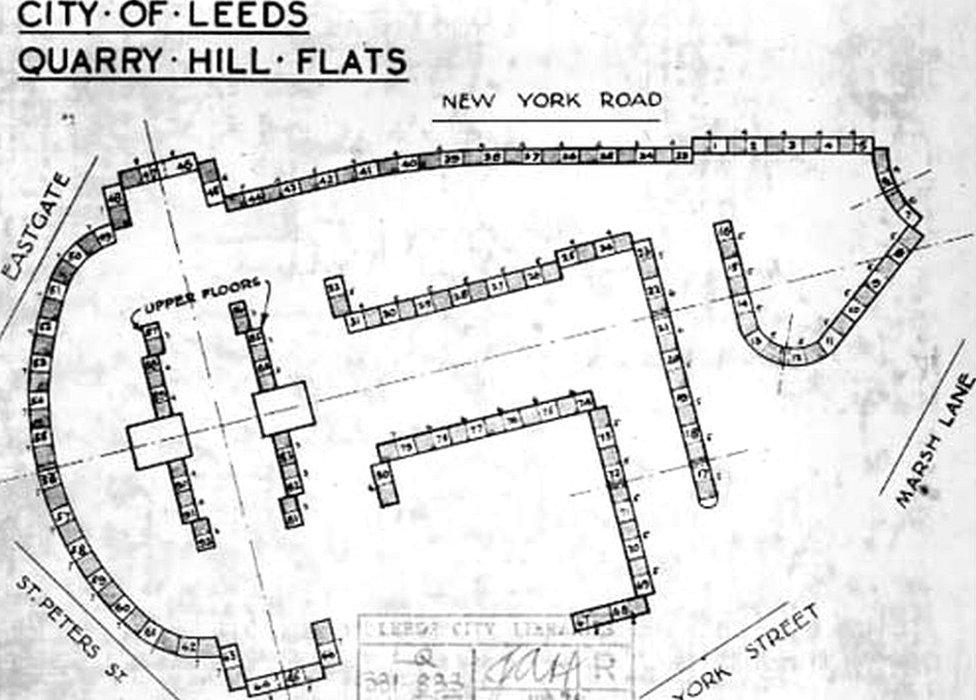
The plan of the Quarry Hill site in the 1930s

"That the Leeds working class needed rehousing was in no doubt", according to the Municipal Dreams blog
While much of the poor terraced housing had been on Quarry Hill, the new flats scheme at the same site was lauded for its modern features including electric lighting, a refuse chute system and planned communal facilities.
Martin Hamilton, director of Leeds Civic Trust, said: "We talk about city centre living today, but these were the first city centre apartment blocks in Leeds.
"It was a kind of social engineering, moving thousands of people across Leeds for better-built housing."
When the new flats were opened for viewings, large queues of people formed eager to glimpse the future.
For many people the Quarry Hill flats complex became a popular place to live - at least when they were still fairly new.


A popular World War Two rumour said Hitler had chosen Quarry Hill as his headquarters for after an invasion
Voices from the Hill
John Speller: "I lived in Quarry Hill most of my young life from the age of five to 20 years old and look back on them with much fondness. The shops had one of the best fish and chip shops in Leeds. We had a washhouse second-to-none, but most of all the comradeship between neighbours was fantastic. Quarry Hill Flats was a way of life, a community."
Jean Kershaw: "We moved from Kitson house after it was bombed to Neilson House. I remember going into the air raid shelters and being entertained by many different people to stop us kids feeling scared."
Keith Mallinson: "I remember going to the huge washhouse with my mam aged about four or five and being washed in the kitchen sink in Oastler House where my gran, grandad, mum, dad, brother and I lived."
Raymond Jones: "We moved into the flats in 1938 and moved out when I was married in 1956. I remember those nights through the war, every night when the siren sounded down into the shelter at the back of our flat. When Victoria House got one, we thought our number was up. We came out of the shelter to find all our windows were blown out."
John Allen: "I was born in 1955 and lived in Neilson House until 1976. It was the best place I have lived."
Source: BBC

However, by the late 1970s, just four decades after they had been built, the Quarry Hill flats were bedevilled by problems with their construction and facilities such as the rubbish chutes.
Civic Trust boss Mr Hamilton said the flats were "expensive to maintain", while Mr Boughton's blog referred to them as "a classic example of an 'island estate', geographically cut off and socially isolated".
"Encircling main roads and the perimeter blocks - 'somewhat forbidding though undeniably impressive' according to [architectural historian] Pevsner - created a fortress-like appearance which intimidated non-residents," he wrote.
It was a point not lost on David Edge, who previously told the BBC he remembered what it was like walking through the development in the mid-1970s.
"It felt deserted and barren. I was nervous about walking through it because it had a bad reputation.
"It seems to me that it failed - not because of the buildings themselves, but because architects fail to realise you cannot cage people and expect them to like being cut off from the rest of the city by their own dwellings, which acted as walls."
By 1978, the once-ambitious project crumbled and was finally demolished.
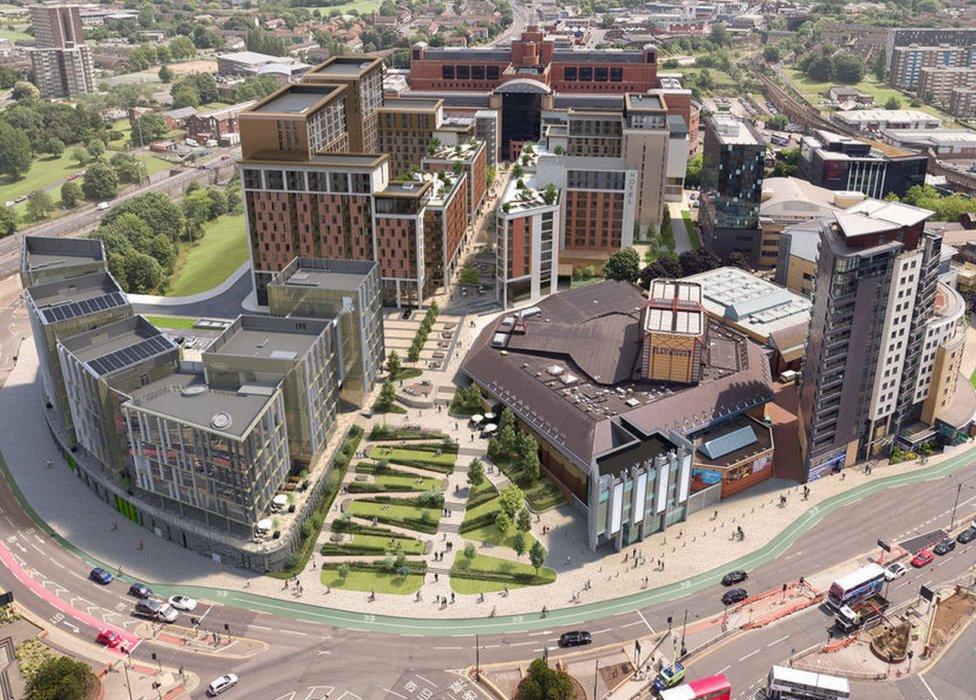
Artist's impression of how Quarry Hill in Leeds will look when the new SOYO development is finished
The area around Quarry Hill, however, did not fall into disrepair, and is home to a number of institutions such as Leeds City College and Leeds Conservatoire, the city's Playhouse, the BBC's Yorkshire headquarters and the looming, distinctive, Quarry House, which contains government departments and NHS offices.
The new SOYO (SOuth of YOrk Road) scheme, which is due to be completed in 2022, will see people once again living on a six-acre (2.5-hectare) site on Quarry Hill, including 16-storey tower blocks.
Civic trust boss Mr Hamilton believes the original landmark complex just missed out on longevity.
"No doubt it would have been listed if it was there now - but it missed out by about 10 years."
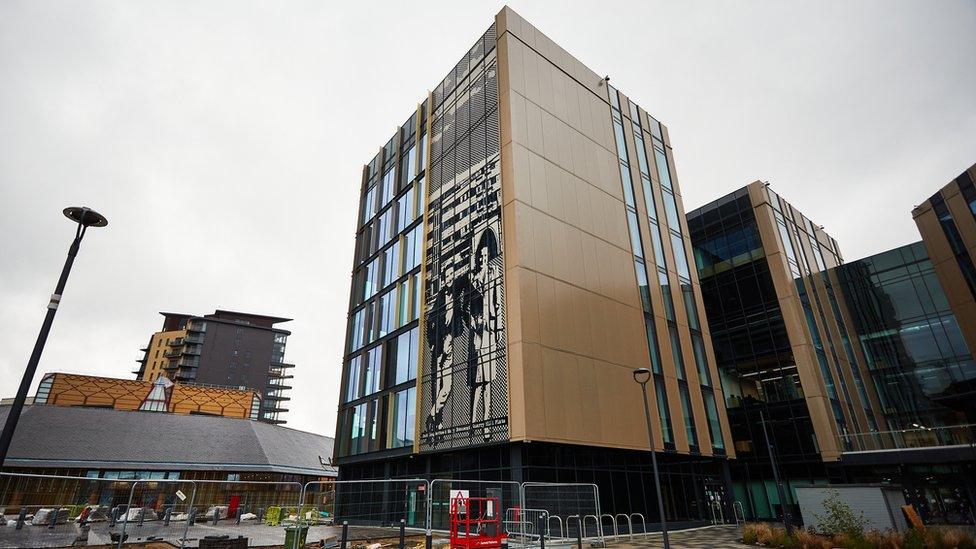
An 80ft (25m) high image inspired by former Quarry Hill residents can be seen on Leeds City College

Follow BBC Yorkshire on Facebook, external, Twitter, external and Instagram, external. Send your story ideas to yorkslincs.news@bbc.co.uk, external.
Related topics
- Published5 September 2021
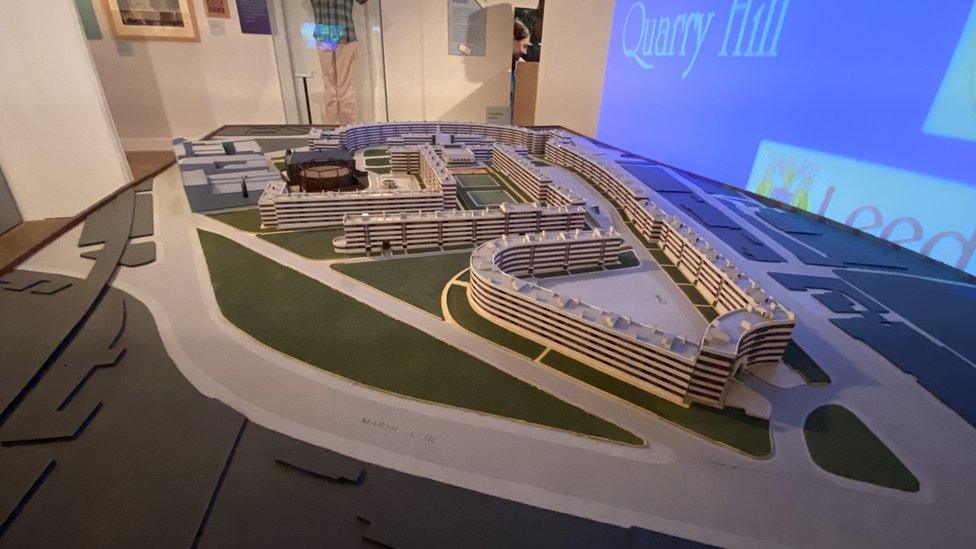
- Published5 September 2019
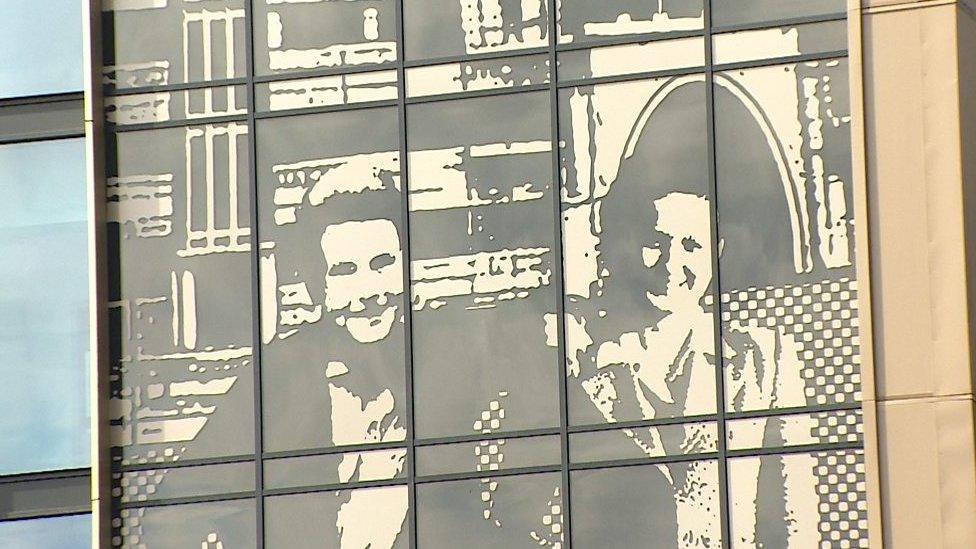
- Published31 May 2018
